The Psychotronic Tourist: “POSSESSION” (1981)
“It all started with Possession.”
Thus began the intro to my second book House of Psychotic Women, and indeed, Andrzej Zulawski’s Possession is a key film for me. It’s equally important to many others, as attested to by the wealth of writing on it that has popped up over the past few years since Zulawski’s “North American renaissance”.
I have always looked at Possession from a personal perspective, despite claims from Zulawski and his canada cialis biographers that the film is primarily a political commentary. It was only when visiting Berlin and seeing the city through the lens of Possession that I was able to understand this alternate perspective on the film, especially as the remnants of the Berlin wall run like a scar through the city, with both of Anna’s apartments directly facing it.
The amount of material already out there made me wonder whether compiling a tour of the film locations would be redundant; not only do a few websites have then-and-now photos of some (but not all) of the film’s locales, but the new Blu ray of Possession also contains Zulawski scholar Daniel Bird’s own locations-fueled featurette “The Divided City” which features current video footage alongside clips from the film. But all of these things put together still didn’t comprise a full, detailed tour that travellers to Berlin could easily follow. So while my work complements the work of those who came before me, I wanted to put together as comprehensive generic cialis cheap a tour as possible, with an accompanying map (scroll down to the bottom for the map). Hopefully this’ll come in handy for film buffs visiting next year’s Berlinale and EFM.
Thanks to my tour buddies this time around, filmmaker Buddy Giovinazzo and Gesine Giovinazzo-Todt, as well as Daniel Bird, who is currently busy at work with Arrow Films producing the forthcoming Walerian Borowczyk box set!
Anna and Mark’s Apartment – Bernauerstraße 68
The film begins when Mark arrives home after a business trip – the film rather explicitly hints that he is a spy who regularly visits East Berlin – to the apartment he shares with Anna and their son Bob at the northeast corner of Bernauerstrasse and Swinemunderstrasse, only to be rejected by his enigmatic and distressed wife. Bernauerstrasse is a busy street between the Mitte and Wedding boroughs that once ran lengthwise along the Berlin Wall; the ruins Mark sees out the window from the taxi are the remnants of apartment buildings on the East side that were bricked-up to prevent people from jumping from their windows into the levitra from canada West. The apartment building itself is now largely surrounded by pedestrian streets and a park that cuts some of the surrounding streets in half (such as the nearby Ruppinerstraße, where the film’s church and school sit). The red-bricked order levitra online uk corner block is a newer post-WWII building that is comprised of both residential apartments and several businesses on the ground floor, including many medical offices. Right next to it, at the intersection of Swinemunder and Bernauer is a memorial stone for people killed trying to escape over the wall from East Berlin. As we drive around the area, Gesine says “If I had to live in this neighbourhood I would kill myself.”
Then:
Now:
Mark’s Office – Fehrbelliner Platz 1-4 / Hohenzollerdamm 180
Mark goes to collect is payment for his recent job, which he claims will be his last, although his mysterious employers are eager to re-engage his services to maintain contact with the man with pink socks. The building is on the corner of Hohenzollerdamm and Fehrbelliner Platz, flanking the the Fehrbelliner Platz U-Bahn station. In real life the building is a government building housing the Senate Administration for Urban Development, designed by Otto Firle in 1934 as part of a competition mounted by Adolf Hitler and Adolph Speer for architecture reflecting the might of the National Socialist agenda.
Then:
Now:
Café Einstein – Kurfürstenstraße 58
Host to one of the most histrionic attempts at a breakup lunch ever committed to film, the Café Einstein in Berlin’s ritzy Tiergarten area is far more popular with diners than its screen counterpart in Possession would have us believe. The obligatory meeting in neutral public space goes awry and Mark’s attempt to chase Anna through the restaurant provokes a rather comedic pile-up of employees topped by the pompous presence of a chef’s hat.
Built in 1878 in the popular 19th century neo-renaissance style, and bought in the 1920s by Jewish banker Georg Blumenfeld and his wife, who turned it into an elite Weimar-era gambling club before it was seized by the Nazis, driving its owners to commit suicide. The Nazis moved in and Goebbels gifted the place to his then-mistress, actress Henny Porten, who eventually died there. It is one of the few buildings in the upper-class area to have survived the bombings unscathed, and after a period of disuse, it became Café Einstein in 1978, and has since thrived as a Viennese-style coffee house. Outside the front gate, two brass memorial stones (known as Stolpersteine) commemorate its owners who were expelled by the Nazis. The corner booths where Mark and Anna sit at a right angle from eachother have been redesigned for more seating, but the mirrored corner is still recognizable. Café Einstein would also later serve as a location for Tarantino’s Inglourious Basterds.
Then:
Now:
Connecting Subway – Gleisdreieck U-Bahn
This U-Bahn station in Kreuzberg is a hub for connecting the U1 and U2 lines. When Mark hires the detective to follow Anna, he follows her into this station, where she waits after picking up groceries. Geographically it doesn’t make sense for her to stop at this station given her traversal between the two apartments – she could take the U8 straight from her apartment on Bernauerstrasse to her Kreuzberg apartment close to the Moritzplatz station. But at the time, this would have required going through one of the “ghost stations” in East Berlin; trains boarded in West Berlin would go through East Berlin without stopping, and East German border guards would patrol the disused stations to prevent escape attempts.
Then:
Now:
The Monster’s Apartment – Sebastianstraße 87
Sam Neill is told by the private detective that Anna is living at 87 Sebastianstrasse, first floor (second floor to North Americans), and this is indeed the real address of the building. At the time of filming, the SO36 postcode area of Kreuzberg was one of Berlin’s poorest neighbourhoods, widely considered a slum, a popular place for Turkish immigrants and a haven for artists and counterculture types – although it has become increasingly attractive to wealthier occupants since reunification. It is located right off Oranienstrasse, home to the legendary SO36 punk club and known as the “revolutionary road” as it was the site of many left-wing demonstrations (there is still an active Occupy movement with camps in the area). Since filming, the building’s grimy stone has been bleached, and it looks significantly more majestic. But the other, major difference between the Sebastianstrasse apartment then and now is the absence of the Berlin Wall. As Daniel Bird points out in his documentary “The Divided City” on the new Possession Blu-ray, Possession was “a reminder of life on the edge of the Iron Curtain”: while the wall carved out a pocket of the city, separating it from the surrounding GDR, Sebastianstrasse itself lay on both sides of the wall, split down the middle lengthwise like the result of some petty argument out of Norman McLaren’s Neighbours. The small strip of road and sidewalk on the Western side was apparently officially GDR property though the Westerners were allowed to use it. The image of the wall winding its way down and across Sebastianstrasse would become famous and makes the choice of this particular building as the monster’s abode seem especially prescient. Imagine a wall less than 3 metres from your front door, on the other side of which lies a death strip buffer to another country whose would-be defectors could be shot down in easy view of your living room. Like the site of Anna and Mark’s apartment on Bernauerstrasse, Sebastianstrasse was the locus of some famous escape attempts: nearby 82 Sebastianstrasse contained a basement tunnel that ran 200 yards to Heinrich-Heinestrasse in East Berlin, dug out by Westerners hoping to liberate trapped family members. The Stasi (secret police) were waiting for them and all involved were shot or imprisoned.[i]
Then:
Now:
Bob’s School – Vineta Primary School, Demminerstrasse 27
We visit Bob’s school several times throughout the film, the first of which derails Mark when he realizes that Bob’s teacher Helen is the doppelganger of his wife Anna. This four-storey school built in 1886 is virtually around the corner from their Bernauerstrasse apartment, and consists of a pair of beautiful yellow and red-bricked buildings sharing a heavily treed courtyard. Strangely, the school (as with many other things in the neighbourhood) is named after a mythical city on the coast of the Baltic Sea that was washed away by a flood due to the excessive and blasphemous lifestyle of its inhabitants. But an excerpt from Karl Wilhelm Muller’s famous 1825 poem Vineta makes this peripheral connection seem somewhat appropriate for the dangerous passion of Possession and its divided city:
Deep beneath the gleaming surface sunken,
Ruins of that city still remain,
On its turrets sparks of golden splendor
From the mirror glimmer back again.
And the mariner, to whom appeareth
In the evening light its magic glow,
To the selfsame spot forever steereth,
Though the rocks the threatening below.
Then:
Now:
Church – Friedenskirche Zum Heiligen Sava, Ruppiner Strasse 29
In a scene that would be referenced years later in Zulawski’s Szamanka, Anna stands at the foot of the crucifix in a church, whimpering – one last plea for god to show his face before she turns inward for divinity. Built in 1888, this listed heritage building designed by August Orth (favoured architect of the Strasbourg industrial family) was originally a Lutheran Church under the name Friedenskirche, now Friedenskirche Zum Heiligen Sava (Peace Church of the Holy St. Sava). Damaged in WWII bombings, the church was restored in the early 50s, but its constituency waned by the 1980s and it sat empty for a time until 2001 when it was renovated again and inaugurated as a Serbian Orthodox Church to accommodate the growing Serbian population in Berlin. I tried to get in to see what changes had been made to the interior with the transition, but contrary to rumours that “the house of god is always open”, the doors would yield to no amount of yanking.
Then:
Now:
Subway – Platz der Luftbrücke U-Bahn
Possession’s most famous scene, which bewitched audiences and cemented the film’s cult status for eternity, is Anna’s trance-like breakdown and ‘miscarriage’ in the subway. It is uncertain why she would need to be in this station, which is at the southernmost border of the Kreuzberg and Tempelhof-Schoneberg boroughs, by the now-abandoned Tempelhof Airport (so named because it is on former Knights Templar land). Originally called Kreuzberg U-Bahn, the station was renamed in 1975 after the Allied Forces airlift initiative that brought in provisions to the West Berliners during the Soviet blockade of Berlin from 1948-1949.
Then:
Now:
Bar where Mark kills Heinrich – Stiege, Oranienstrasse 47A
After discovering Anna’s monster and refrigerator full of body parts, Heinrich is stabbed by his mocking lover, and flees around the corner to a nearby bar. He calls Mark in a fit of worry, who tells him to stay where he is and “bleed for a while”. Mark has difficulty hiding his pleasure in seeing Heinrich so unravelled, and after letting Heinrich prattle on about the injustice of the situation, he brains him with a toilet lid and leaves him flushed in a bloody john. The interior of the bar and bathroom are elsewhere, but the exterior remains the Stiege restaurant and bar at the corner of Oranienstr and Luckauerstr, literally around the corner from Anna’s Kreuzberg apartment. Stiege means “stairs” and refers to the fact that the entryway once had a flight of stairs, due to the fact that the street itself was once much lower to accommodate horse-drawn carriages. Built in 1879, the interior still boasts much of its original woodwork and chandeliers, but the owners – two Palestinian brothers who have owned the restaurant for over 30 years – told us that at one time it had been a hangout for pimps, and later left wing activists, writers and artists. The exterior looks very similar today, right down to the yellow tiles on the façade.
Then:
Now:
Teacher’s Apartment – Intersecton of Bocklerstrasse and Gitchenerstrasse
Helen’s apartment exterior appears briefly in the film when Mark drops off Bob in her care embarking on his last day of cross-city shootout madness. The large, multi-coloured expressionistic complex forms a V shape flanking Bockler Park along the Landwehr canal, and is now a seniors’ independent living residence.
Then:
Now:
Margie’s House – 7 Gustav-Freytagstrasse
Tourists beware – there are two Gustav-Freytag streets in Berlin. One is in Schoneberg, but the film location is in Charlottenburg-Wilmersdorf on the western edge of the city, near the intersection of Gustav-Freytag and Oberhaardter Weg (you can see this intersection in the film when Mark pulls up on the motorbike he appropriated from the dead Heinrich). Mark tells Anna to wait for him at Margie’s house, and it is here that he happens upon her having sex with the monster. He leaves (and shares an exquisite scene with Heinrich’s mother), but when he returns the next day, the police are at Margie’s house and a shootout ensues. The house is on one of the wealthiest residential streets in Berlin, with many of the houses around it registered heritage villas, and its backyard looks over the Hundekehlesee, or “Dogs Throats Lake”, so named because of the hunting dogs once housed there. Although the house seems in disrepair in the film, if Margie lives here, she’s loaded.
Then:
Now:
Bridge – Lohmuhlenbrucke
Located at the triangle between the three districts of Kreuzberg, Neukolln and Treptow, this bridge over the Landwehr canal was built in 1920 and was a busy roadway until it was cut off on the eastern side by the Berlin Wall. Just before the film’s final chaos is about to erupt, the soundtrack signalling his newfound determination, Mark stands in view of the Eastern watchtower on the other side of the Wall, looking up at the guards and then down at a dead Alsatian in the water. “That dog didn’t die of old age”, says his former employer (later revealed as the man with pink socks), who comes to meet him on the dead-end bridge to convince him to return to his post. They walk up and down a little lookout platform, as Mark tells the story of his childhood dog named Louie, who had crawled under the porch to die. “I wanted to see what it was that made him crawl under there,” he says before riding off to join Anna. The bridge was also featured in Wim Wenders’ Wings of Desire.
Then:
In Wings of Desire:
Now:
Tunnels and Riverfront warehouse – Industriepalast at Schlesische Straße No. 29-30
After the shootout at Margie’s house, an injured Mark drives off on Heinrich’s motorcycle, bellowing as he drives down Schlesischestrasse and turns down a series of covered alleyways that lead to the riverfront side of the large industrial complex known as the Industriepalast (Industry Palace). The small businesses park with several courts was built from 1907 to 1908 by the architects Boswau and Knauer, and has since been designated as a cultural heritage monument. However, it is on the opposite side of Berlin form Margie’s place, and does not house the amazing spiral staircase seen in the climax…
Then:
Now:
The Spiral Staircase – Joseph Haydn straße 1
After entering the industrial building on the riverfront, Mark miraculously emerges in the foyer of this imposing heritage building (the only one on the street) just north-west of the Tiergarten, built in 1886/87. He heads up the ornate spiral staircase, bloody and dying. Anna finds him and follows him up with her now-completed monster in tow, who is a dark-eyed double of Mark. After Anna and Mark have their final reconciliation, the monster escapes. The building now houses a combination of offices and apartments and while the front door is locked, you can buzz to get in if you have business with one of the offices inside.
Then:
Now:
****
[i] http://tracesofaborder.com/2013/11/29/between-and-beneath-mitte-and-kreuzberg/

 February 20, 2014
February 20, 2014 



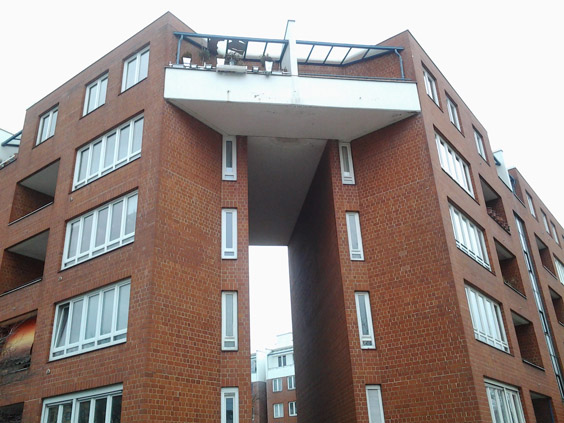




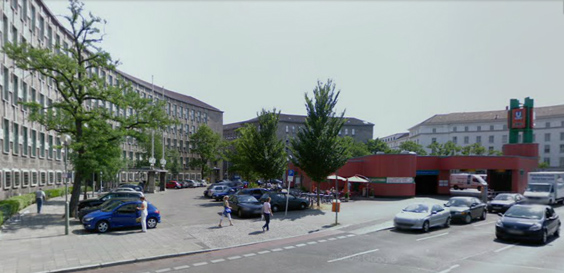
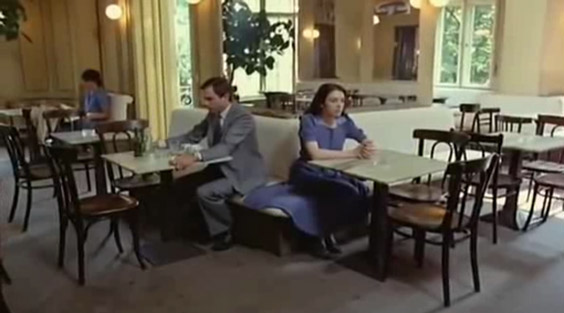
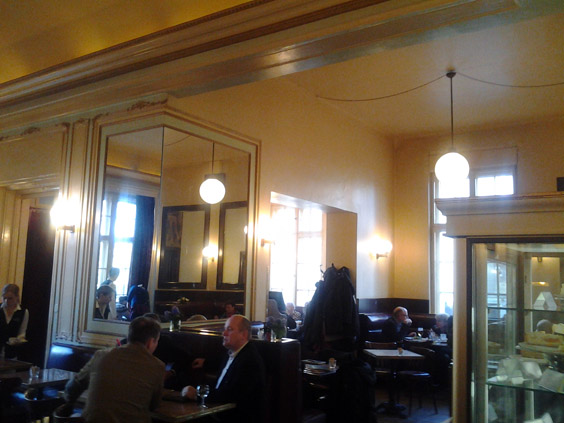

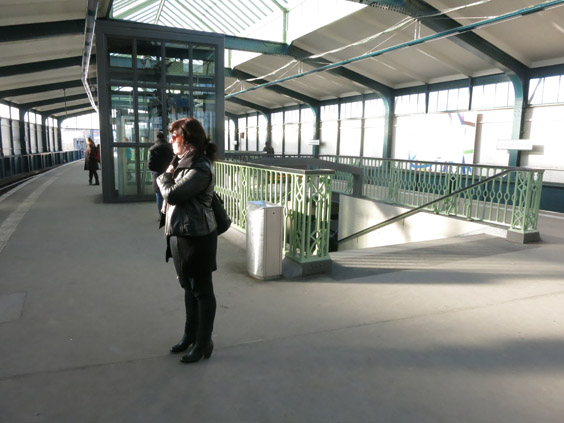



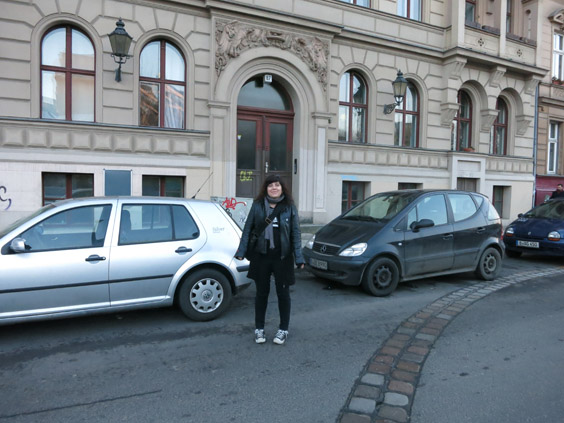

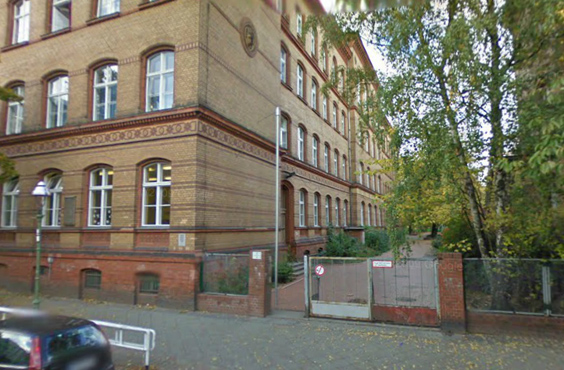

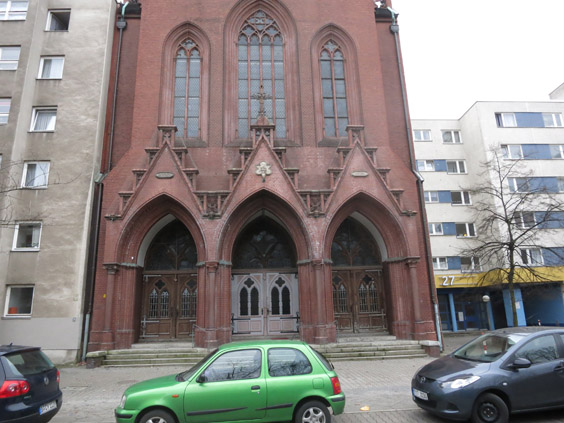

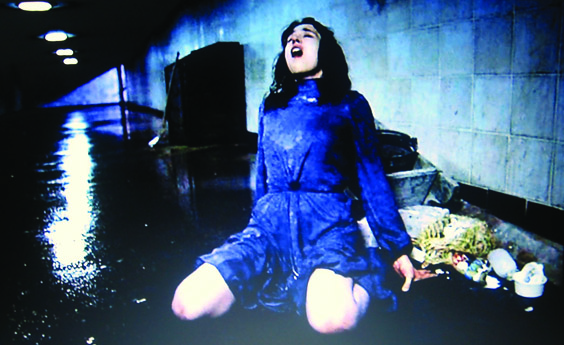

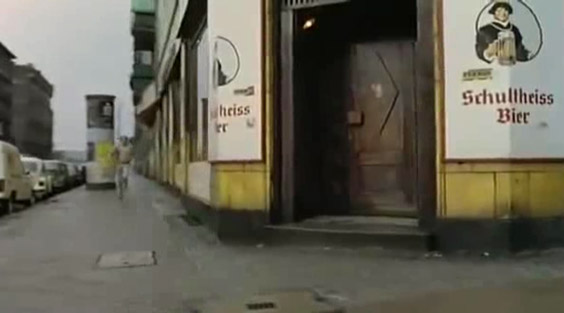

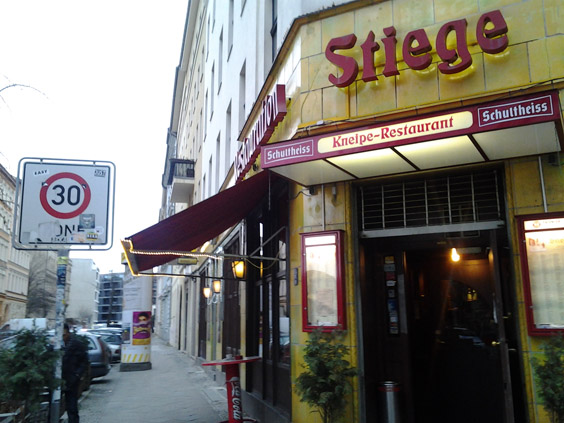
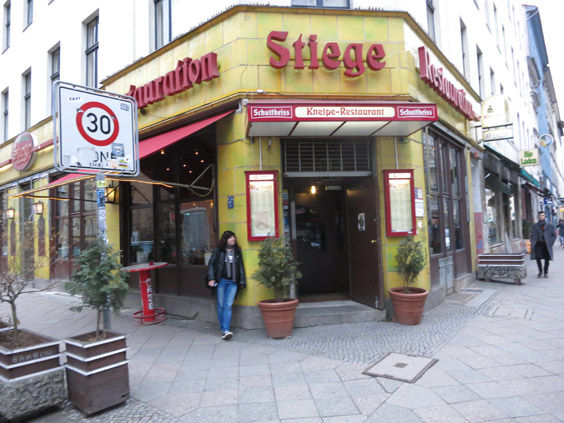
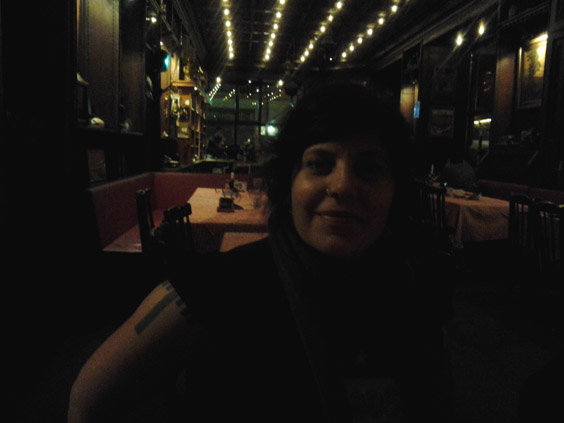

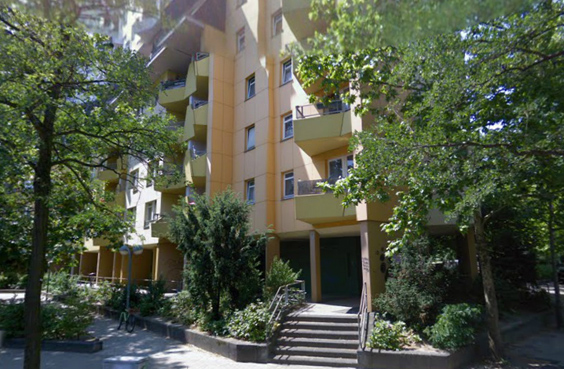







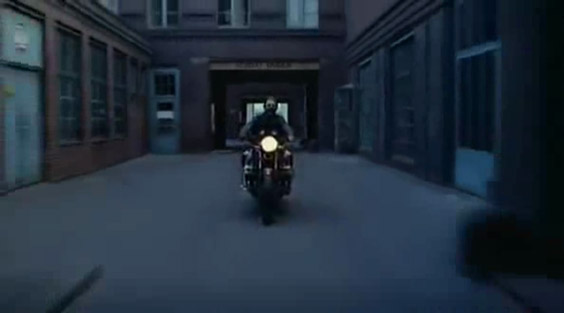


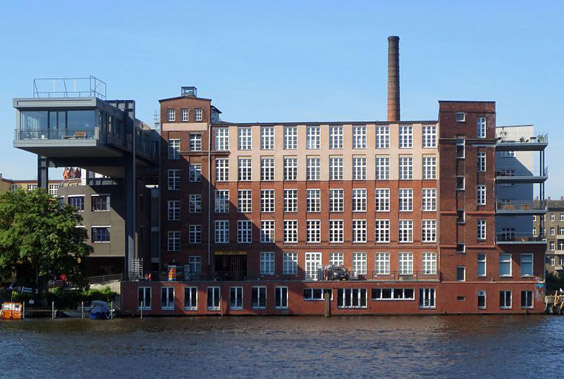
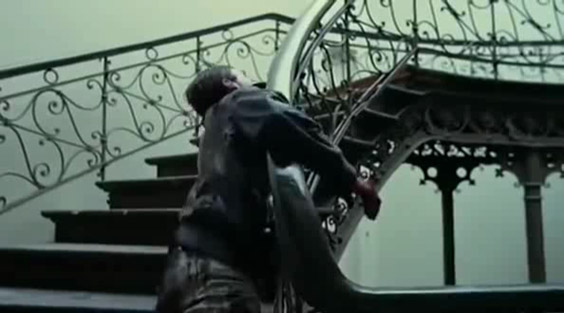
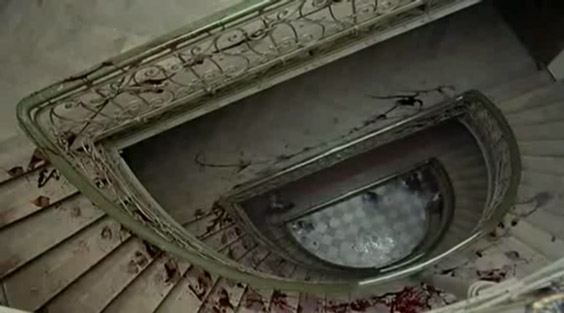




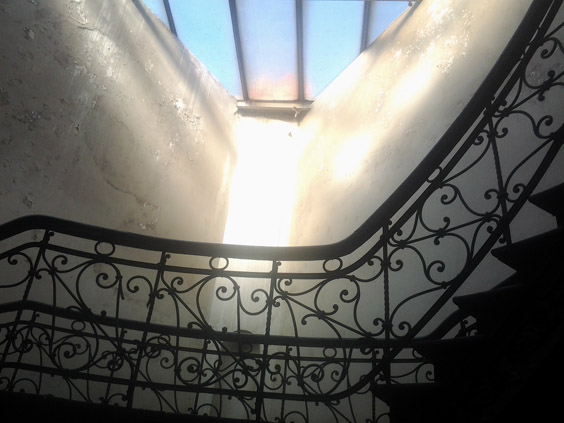



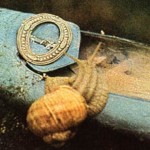






Thank you very much for the post, but I’m just curious how did they manage to shoot in East Berlin? Schlesische Straße 31 was behind the wall at that time. Do you know any explanation?
9 yearss agoHi there — I don’t think it actually was behind the wall, I think the wall started maybe a block down, at least based on the wall maps I’ve seen!
9 yearss agoSchlesische Straße 31 was in Kreuzberg, West Berlin. The border ran along the river behind the complex, and crossed the street along the border of Trepto district a few hundred metres to the south.
8 yearss ago